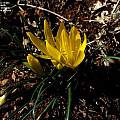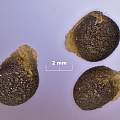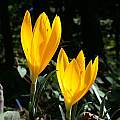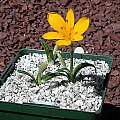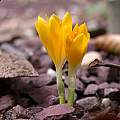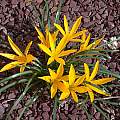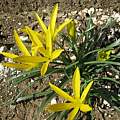Quick Characteristics:
| Height: | 0-10 cm (0-3.9 inch) |
| Flower Colors: | yellow |
| Flower Season: | mid autumn |
Sternbergia sicula Tineo ex Guss. in 2025 is considered to be a synonym of Sternbergia lutea. This form grows wild on limestone hills in Mediterranean regions and is said to grow in more sharply drained habitats, to have narrower leaves, and to be slightly lighter in flower color. The first two photos by Mark Wilcox were taken at the top of the mountain above Acrocorinth in the Peloponnese region of Greece. Height range: to about 10 cm. The first picture shows a plant that has somehow grown inside a small opening in solid rock. Flowers are shown in bud, bloom, and withered states. The second photo was taken a few feet away, showing another blooming plant with leaves, more typically sited in soil. They had a southern exposure. The third photo by Jane McGary was taken in the Mani Peninsula, Greece, late October. Photo 4 of seed by David Pilling.
The first four photos below were taken by John Lonsdale. The last two photos, one from John Lonsdale and the second from Angelo Porcelli, show bulbs that are descendants of seed from Rannveig Wallis in Wales collected as Sternbergia sicula ex Crete.

